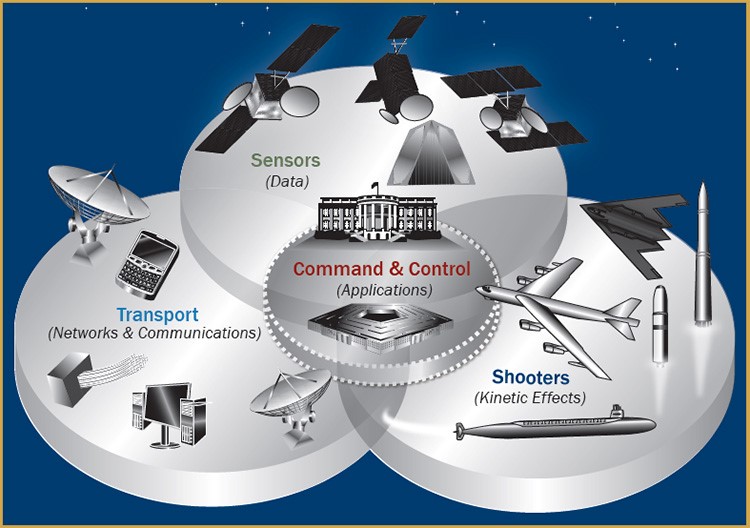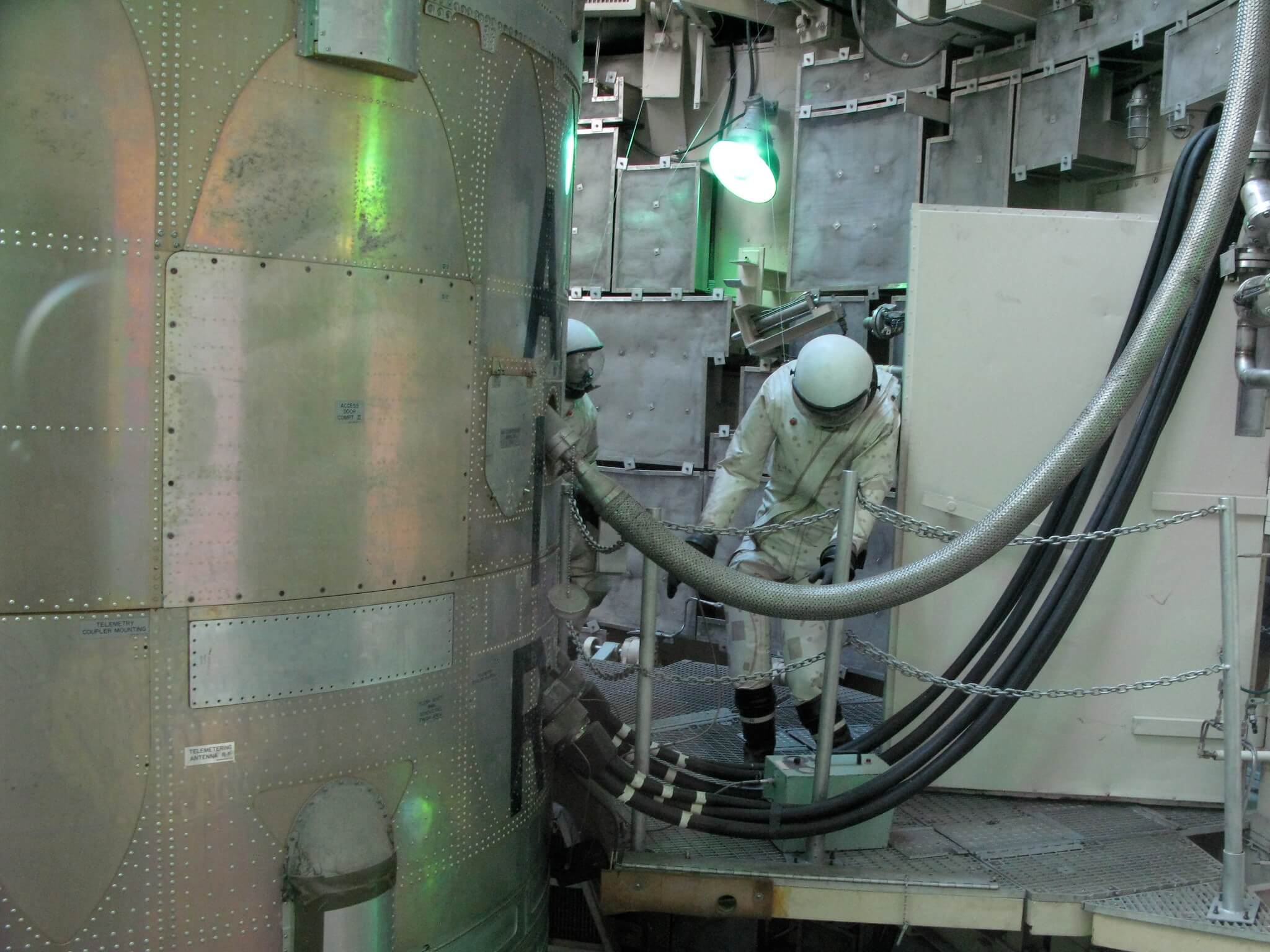
Will humans and/or machines save us from nuclear doomsday?
The idea of a human outside the loop of nuclear decision-making may appear to be far-fetched. Yet, this is exactly the idea behind numerous recent advances in nuclear security. In order to maximise the benefits and minimise the risks of both AI and human judgment, the policy debate needs to go beyond the false dilemma of humans versus machines in nuclear decision making.
In 2011, Russia announced that its automated response system Perimetr had been reactivated. Seven years later, President Vladimir Putin announced the development of the unmanned underwater vehicle Poseidon, able to carry nuclear munitions. This vehicle, once ready, should autonomously execute commands.1
Russia insists that a human is always in control in both systems. Yet, Russia is not the only country attracted to the growing capabilities of artificial intelligence (AI). In the United States (US), analysts have called for an automated ‘dead-hand’: an AI-enabled system that is able to detect, decide and direct a response to an incoming attack.2
By making nuclear weapons faster and more unpredictable, the time a targeted party has to detect, interpret and respond to a threat becomes severely compressed
These calls are driven by growing risks that advances in other emerging technologies – such as hypersonic gliding vehicles or hypersonic cruise missiles – severely compress the time available to respond to an incoming threat. The integration of hypersonic gliding vehicles and hypersonic cruise missiles into the nuclear arsenals of major powers is changing the nature of nuclear threats. By making nuclear weapons faster and more unpredictable, the time a targeted party has to detect, interpret and respond to a threat becomes severely compressed.
In a recent piece in the Clingendael Spectator, Sibylle Bauer notes that the rush to develop hypersonic weapons – which has spurred an arms race among the major nuclear powers – has further compressed the time it takes to make a decision ‘in real time’.3 Scholars advocating for more autonomous systems are concerned that current American nuclear command, control and communications (NC3) systems will not act quick enough in the face of an impending threat. Hence, an automated system is necessary to reinforce nuclear deterrence.

Others have cautioned against increased automation in command and control, calling an AI-enabled NC3 “a recipe for disaster”.4 Yet another group of scholars has highlighted that AI is in one way or another already integrated into NC3 systems, and hence future discussions should not be focused on “whether” but on “where, to what extent, and at what risk”.5
In order to maximise the benefits and minimise the risks of both AI and human judgment, the policy debate needs to go beyond the false dichotomy of humans versus machines. In NC3, there is room for both machines and humans. We will be better off thinking about how humans and AI will address each other’s biases.
Machine-driven command and control
The inclusion of automation in nuclear decision-making is not new. Both the US and the Soviet Union began building automatic nuclear command systems in the 1960s. More recently, advances in AI have shown promise when it comes to other features of NC3.
For instance, machine learning (a subset of AI) can add to the perceptual intelligence6 of surveillance and reconnaissance programs, early warning systems, and decision-support systems by enhancing the abilities of these systems to process huge amounts of data in a short period of time.7
This feature is particularly alluring as we think about the growing difficulties of detecting nuclear threats – and shortening the time to respond to them – associated with the growing integration of hypersonic technologies into nuclear arsenals.

But the increased automation of nuclear decision-making carries significant risks. In a recent policy roundtable in the Texas National Security Review, authors cautioned against “the misperceptions about AI’s capabilities” as well as against automation bias.8 These biases could cause human decision-makers to surrender control to machines. Machines’ susceptibilities to technological failures make these biases particularly concerning.
AI-enabled decision-making is also unable to engage in contextual thinking, make ethical judgments, understand intent, or even question orders in ways human decision-makers can.9 Moreover, as US Air Force senior pilot Zach Hughes noted, AI could make the ‘fog of war’ worse.10 When it comes to something with high stakes as the employment of nuclear weapons, a fully automated ‘dead-hand’ that removes humans from the decision-making process can be catastrophic.
‘Humans in the Loop’
Some scholars hold the view that AI should not be included in any aspect of NC3 because algorithms are incapable of considering ethical aspects of a decision, because they automate decisions when you need judgement and because they reduce the time needed for rational behaviour to prevail.11
Humans can use their values, their judgments (of what is right and wrong), their experiences and their rationality to shape the way they assess a situation, whereas machines – programmed for profit and efficiency12
– could tend to assume the worst.
Interestingly, some have suggested that automating nuclear command and control may vary depending on regime type. In a recent piece, James Johnson, Assistant Professor in the School of Law and Government at Dublin City University, suggests that more autocratic nuclear states (for example China) that have more centralised nuclear decision-making structures and are more concerned about the survivability of their nuclear weapons, tend to engage in more risky forms of automation and tend to be less worried about the ethical or moral implications of automation.13
That said, top-level policy-makers, whom we interviewed in our research14 , indicated very clearly that they expected that launch decisions of nuclear weapons would always rest with humans. However, these views also demonstrate that we tend to view the value of human judgment uncritically. This view assumes that all human beings will exercise good judgment or even that all humans, given their penchant for reason, will make the same calculations in a crisis.
There is great variation among leaders in different countries when it comes to how accepting they are of AI in their militaries
Behavioural research has shed light on the limits of human judgment and rationality.15 Arguments that humans should be the only ones in the loop assume that all humans are risk-averse and so will do anything to avoid a crisis. While AI proponents – such as those arguing for a ‘dead-hand’ system – might be guilty of having blind faith in AI, sceptics do the same with human judgment.
Neither one in isolation is sufficient. Ample research has shown that humans (let alone leaders) are not always risk-averse.16 For instance, behavioural theories have stressed that how individuals perceive uncertainty will affect their risk preferences. This can help explain why some people may not always be risk-averse when faced with potentially bad outcomes; in fact, some individuals may actually become risk-seeking in an effort to receive a better outcome.
These outcomes are not only psychologically conditioned, but also results of long socialisation processes. As Assistant Professor of Political Science Erik Lin-Greenberg argued in his recent paper, there is great variation among leaders in different countries when it comes to how accepting they are of AI in their militaries.17
You only need to imagine a world leader boasting about the size of their nuclear button to understand that not everyone is equally risk-averse
While Lin-Greenberg draws a lesson that this creates a problem for the functioning of alliances (something we do not dispute), this unwillingness highlights that there are other factors – for example cultural and normative – that influence risk acceptance. Psychologists and sociologists have long recognised that risk acceptance (or avoidance) has an important cultural aspect.18 And embedding nuclear decisions within complex organisations seems not to completely remove these problems.19
In short, the critique of the implementation of AI in nuclear decision-making rests on a rather uncritical view of human judgment and its relationship with risk. You only need to imagine a world leader boasting about the size of their nuclear button to understand that not everyone is equally risk-averse.

A healthy mix of machine learning and human judgment
Under the right circumstances, well-functioning AI can serve as a trusty ‘adviser’ to human decision-makers, providing them with more accurate information in less time, thus increasing stability by reducing the risk of human error.20
Ensuring that AI is always well-functioning is difficult, not least because mitigating the risks of nefarious manipulation remains tricky. These risks underline why the discussion about the inclusion of AI in NC3 systems must include looking at where and how AI becomes involved.21
However, if we want to have a more measured view of the role of AI in NC3 we need to start thinking seriously and critically about the roles that both machines and humans can – and should – play in NC3. Given the biases inherent in both, neither one of them alone is going to save us from a nuclear doomsday.
The research for this article was supported by a subsidy from the Dutch Ministry of Foreign Affairs. The views represented here are those of the authors and do not represent in any way the views or policies of the Dutch Ministry of Foreign Affairs.
- 1P. Topychkanov, ‘Autonomy in Russian nuclear forces’, in: Vincent Boulanin (ed.), The Impact of Artificial Intelligence on Strategic Stability and Nuclear Risk, Stockholm: SIPRI. 2019, p. 68-76.
- 2Adam Lowther and Curtis McGiffin, ‘America Needs a “Dead Hand”’, War on the Rocks, 16 August 2019
- 3Sibylle Bauer, ‘New Technologies and Armament: Rethinking Arms Control‘, Clingendael Spectator, 29 July 2020.
- 4Luke O’Brien, ’Whither Skynet? An American “Dead Hand” Should Remain a Dead Issue‘, War on the Rocks, 11 September 2019.
- 5Philip Reiner and Alexa Wehsener, ’The Real Value of Artificial Intelligence in Nuclear Command and Control’, War on the Rocks, 4 November 2019.
- 6Vincent Boulanin, ‘The future of machine learning and autonomy in nuclear weapon systems’, in: Vincent Boulanin (ed.), The Impact of Artificial Intelligence on Strategic Stability and Nuclear Risk Volume I Euro-Atlantic Perspectives, SIPRI, 2019, p. 53-62.
- 7Philip Reiner and Alexa Wehsener, ‘The Real Value of Artificial Intelligence in Nuclear Command and Control’, War on the Rocks, 4 November 2019.
- 8Mary (Missy) Cummings, Erik Lin-Greenberg, Paul Scharre and Rebecca Slayton, ‘Policy Roundtable: Artificial Intelligence and International Security’, Texas National Security Review, 2 June 2020.
- 9Michael Klare, ‘”Skynet” Revisited: The Dangerous Allure of Nuclear Command Automation’, Arms Control Association, April 2020.
- 10Zach Hughes, ‘Fog, Friction and Thinking Machines’, War on the Rocks, 11 March 2020.
- 11Edward Geist and Andrew Lohn, ‘How Might Artificial Intelligence Affect the Risk of Nuclear War?’, RAND Corporation, 2018.
- 12Lee Rainie and Janna Anderson, ’Theme 3: Humanity and human judgment are lost when data and predictive modeling become paramount’, Pew Research Center, 8 February 2017.
- 13James Johnson, ‘Artificial Intelligence and the Bomb: Nuclear Command and Control in the Age of the Algorithm’, Modern War Institute at West Point, 7 May 2020.
- 14 ‘Emerging Technology and Nuclear Security: What Does the Wisdom of the Expert Crowd Tell Us?’, Vienna Centre for Disarmament and Nonproliferation, 8 October 2020
- 15Jeffrey Knopf et al., ’Real-world nuclear decision-making: using behavioral economics insights to adjust nonproliferation and deterrence policies to predictable deviations from rationality’, James Martin Center for Nonproliferation Studies, January 2016.
- 16See, for example, Alexander George, ‘The “Operational Code”: A Neglected Approach to the Study of Political Leaders and Decision-Making’, International Studies Quarterly 13:2, 1969; Jack Levy, ‘Loss Aversion, Framing and Bargaining: The Implications of Prospect Theory for International Conflict’ International Political Science Review, 1996; Barbara Vis and Dieuwertje Kuijpers, ’Prospect theory and foreign policy decision-making: Underexposed issues, advancements and ways forward’, Contemporary Security Policy, 2018.
- 17Erik Lin-Greenberg, ‘Integrating Emerging Technology in Multinational Military Operations: The Case of Artificial Intelligence’, Texas National Security Review, 2 June 2020.
- 18Ortwin Renn and Bernd Rohrmann, ‘Cross-Cultural Risk Perception: State and Challenges’, in: Ortwin Renn and Bernd Rohrmann (eds.), Cross-Cultural Risk Perception. Technology, Risk, and Society (An International Series in Risk Analysis), Boston: Springer, 2000.
- 19Scott Sagan, ‘The Limits of Safety: Organizations, Accidents and Nuclear Weapons’, Princeton: Princeton University Press, 1995.
- 20Edward Geist and Andrew Lohn, ‘How Might Artificial Intelligence Affect the Risk of Nuclear War?‘, RAND Corporation, 2018.
- 21Philip Reiner and Alexa Wehsener, ’The Real Value of Artificial Intelligence in Nuclear Command and Control’, War on the Rocks, 4 November 2019










0 Reacties
Reactie toevoegen